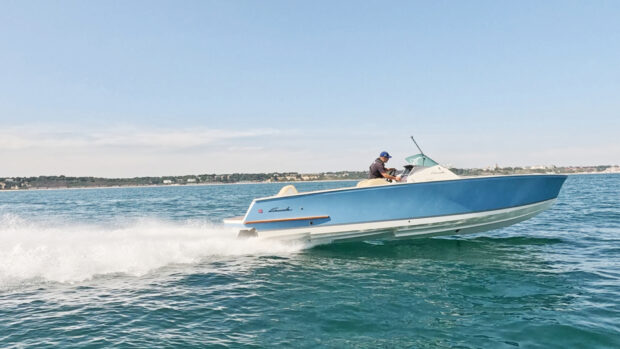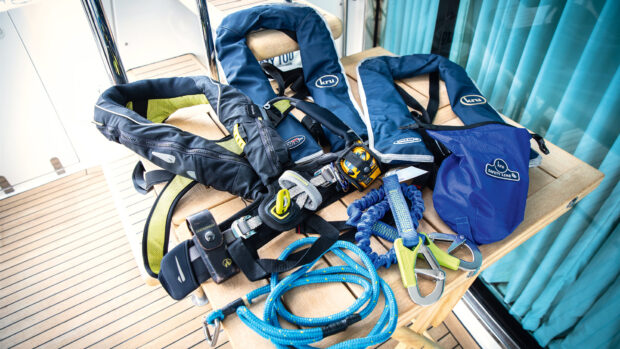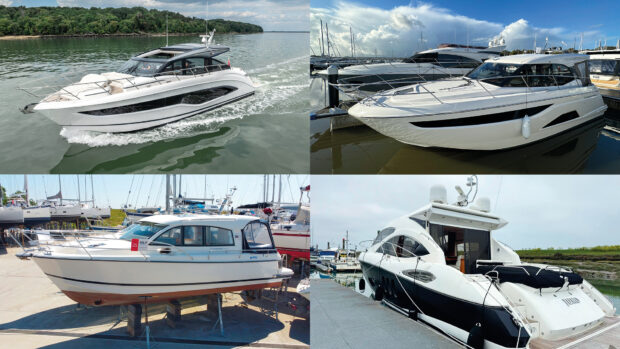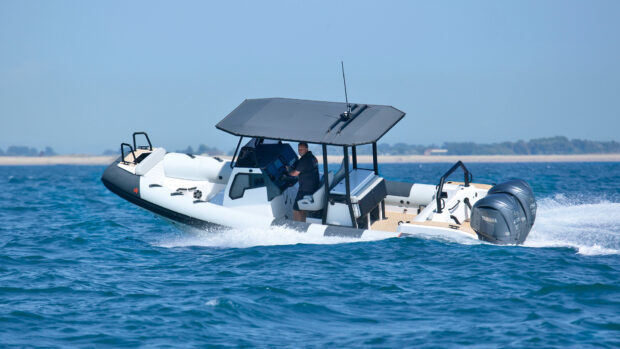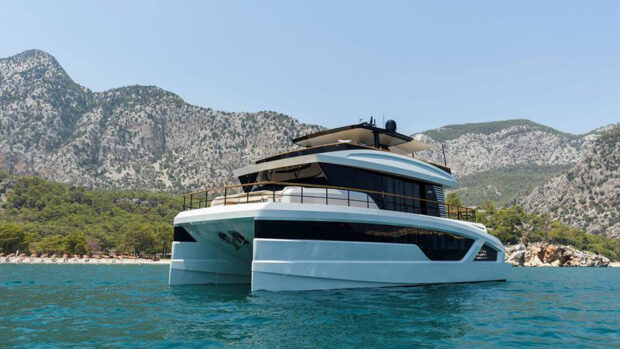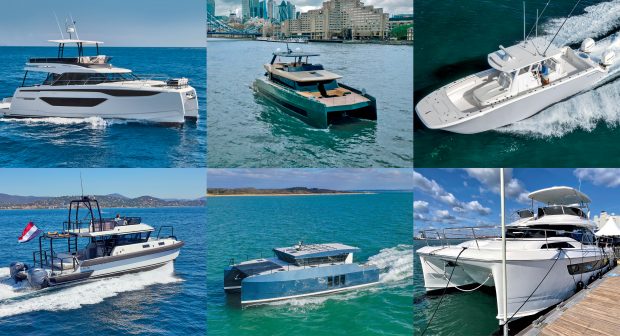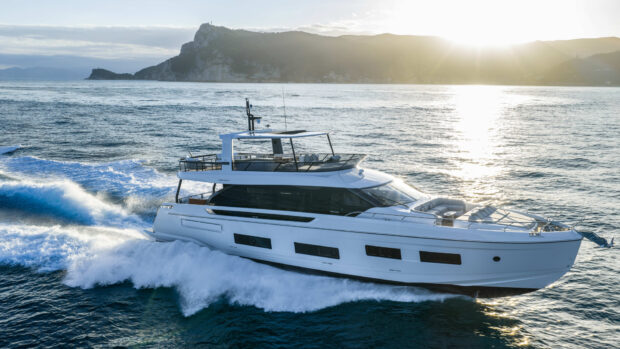Unlike cars most boats rely on the water they’re floating on to keep their engines cool. Our resident boating expert, Jon Mendez gives is his guide to keeping that cooling system in tip-top shape
Unlike cars, which use air to cool the liquid coolant flowing through the engine and radiator, most boats rely on the water they’re floating on to keep their engines cool. Some use this ‘raw’ water (be it fresh or salt water) to cool the engine directly, continually drawing in water through an impeller pump and circulating it around the engine before expelling it out via the exhaust. This is called ‘raw water cooling’ and is the simplest, most basic cooling system.
One step up from this is a raw water system with a thermostatic valve. This opens and closes as required to maintain the engine’s temperature at or near its most efficient operating range before discharging it. On outboard engines, the hot water is mostly discharged underwater through the propeller hub along with the exhaust gas, although a thin stream of water, known as a tell-tale jet, is dispersed separately above the waterline so you can see and feel that it is working correctly.
Smaller inboard engines often use a similar direct raw water cooling system, albeit with a single exhaust/cooling water exit above the waterline instead, allowing easy visual inspection to check that everything is working.
Larger inboard engines tend to use a more complex indirect cooling system. This has a closed circuit for the engine coolant – a special mix of fresh water and antifreeze to circulate around the engine – linked to a series of one or more heat exchangers.
Article continues below…

How to plan a safe passage at sea: An expert guide

How to carry out pre-season motor yacht checks
These heat exchangers have the coolant passing through one side of the system, and ‘raw’ fresh or salt water from outside the boat passing through the other, so the heat from the sealed side is transferred to the raw water and expelled
along with the exhaust as usual.
This system has several advantages. It allows much finer control of the temperature while enabling multiple engine parts and ancillaries to be cooled by a single passage of water. It also reduces the chance of corrosion (as no saltwater is passing through the engine) and it reduces the risk of trapped water freezing over winter and damaging the engine block.
However, it does have a number of disadvantages, as there are far more elements to go wrong. So knowing how your system operates and understanding what to check can make it much easier to spot any form of trouble.
Most overheating issues result from a lack of cooling water flow around the engine. On outboards and small inboards with above-water exhausts, this is fairly easy to spot, as you will see a reduction in the flow of water being expelled and you can test its temperature with your hand (be careful, it could be hot).
For inboard engines with underwater exhausts, a visual check isn’t possible, so they have gauges to monitor the temperature of the closed-loop coolant. If you’re lucky, they might also monitor the temperature of the raw water exhaust.
The downside is that you are only made aware of the problem once the engine has overheated. I prefer to be more proactive and use a heat gun to measure the temperature as it enters and leaves each cooler. This gives an early indication of a problem before it causes a bigger issue. On a vessel with a well maintained cooling system and new impellers, I would expect a doubling of the temperature in the cooling water system between entry and exit.
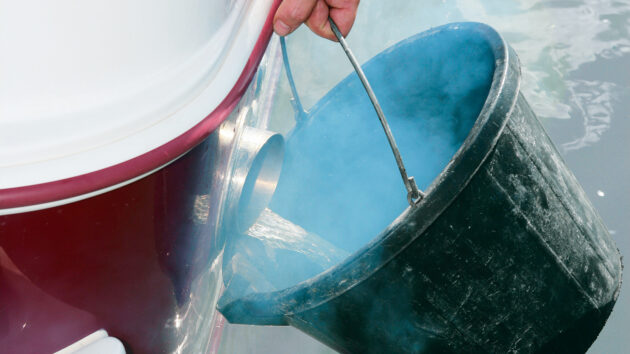
Above water exhaust
On some inboard boats the exhaust and water mix are discharged above the water line, allowing a simple visual check that all is well.
If the flow of water looks slower or steamier than usual, you could have a problem.
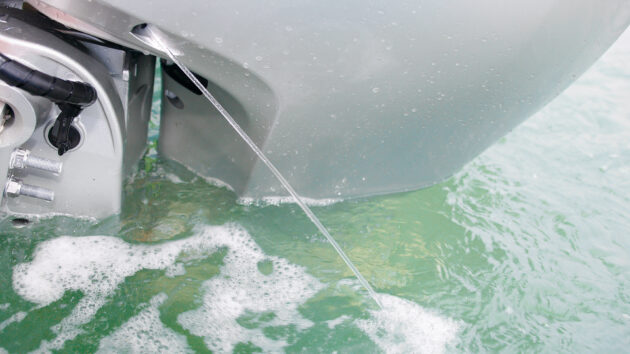
Tell-tale sign
Outboard engines use a combined system with most of the cooling water and exhaust gases being discharged below the water line. However, they also have a small tell-tale stream above the water, which makes it easy for you to monitor and spot any problems.
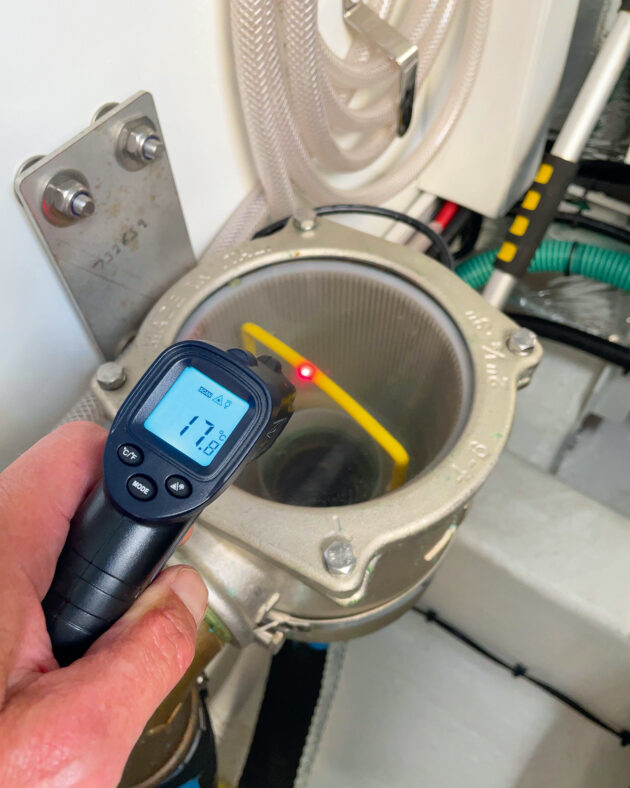
Water strainers
Inboard engines need a large supply of outside cooling water. This is filtered through raw water strainers to prevent debris entering the heat exchangers. These need cleaning out on a regular basis to maintain the flow.
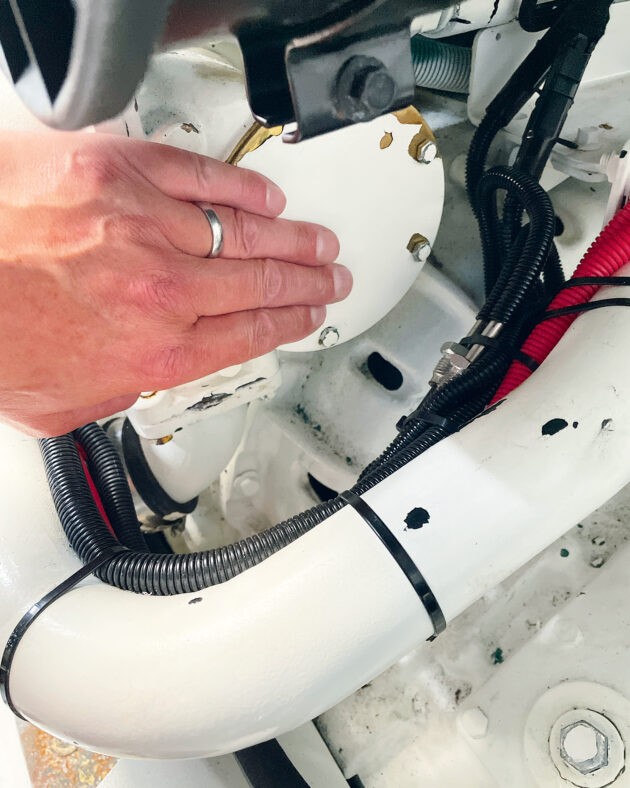
Impeller check
If the hose temperature on the entry and exit of the raw water pump is the same, the impeller should be working as intended. If the exit temperature is higher or the face plate of the pump feels hot, you may have an issue.

Spot checks
It’s sensible to work your way around the cooling system and check the temperature before and after each cooler to check everything is working as it should. I find a heat gun is invaluable for this task.
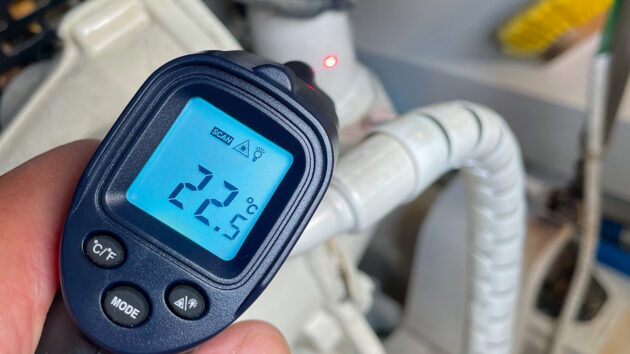
Exhaust check
Lastly check the water temperature just before it enters the exhaust system. On this engine, the sea water inlet temperature was 14°C and the exit temperature was 22.5°C – less than double so everything’s working well.
 If you enjoyed this….
If you enjoyed this….
Motor Boat & Yachting is the world’s leading magazine for Motoryacht enthusiasts. Every month we have inspirational adventures and practical features to help you realise your sailing dreams, as well as tests and news of all the latest motorboats.
Plus you’ll get our quarterly Custom Yachting supplement where we share the last on offer in the superyacht world and at the luxury end of the market.
Build your knowledge with a subscription delivered to your door. See our latest offers and save at least 30% off the cover price.
Note: We may earn a commission when you buy through links on our site, at no extra cost to you. This doesn’t affect our editorial independence.



 If you enjoyed this….
If you enjoyed this….